The Joys of Hill Walking and How to Prepare
Hilltops promise the best sights, but the ascents can be tough! Prepare yourself for the steepest of climbs with these tips for hill walking.
The Joys of Hill Walking and How to Prepare
https://www.contours.co.uk/hill-climbing-how-and-why
by Sarah Rowell
Walking brings many joys: fitness, fun with friends, a sense of achievement and an escape into the countryside to find some of the best views in the world.
The most stunning vistas, however, are usually found from hilltops and mountainsides. To reach them, we need to gain some height. We need to embark on a hill walk.
Climbs (and the inevitable walks back down) can make even the most accomplished walker feel nervous, so you’re not alone if the prospect puts you a little bit on edge.
.png)
.png)
Those nerves aren’t necessarily bad; they give us focus. They ensure we pay attention and take the right steps, which will in turn transform ascents and descents into safer and more pleasant experiences.
So, with our minds sufficiently sharpened by the challenge, how do we to tackle hills with confidence? The Four Ps — pace, posture, poles and preparation — are key, so let’s look at each of these in turn.
Whether going uphill or down, finding a pace you can control is essential, both for your fitness and your safety.
When walking uphill, you should aim for a pace that enables you to hold a conversation, even if it consists only of short sentences, all the way to the top.
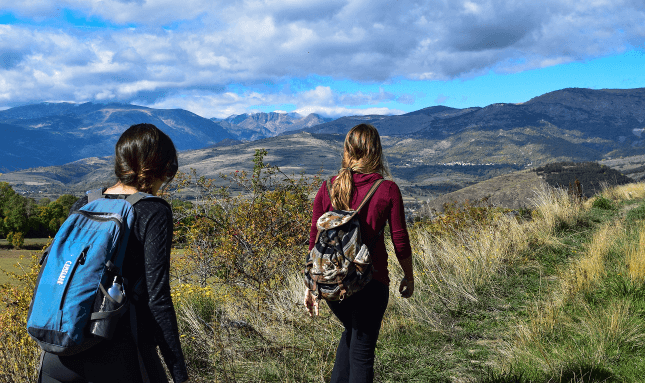
This will invariably mean that you adopt a slower speed than you would on the flat, but on long hills especially, it is a much more economical and often faster option than striding up flat-out in an effort to quickly reach the top. A good overall speed is achieved by keeping within your limits.
This principle was brought home to me when I climbed Mont Blanc. I set off with a group of men, all of whom were faster runners than I.
As we were roped together, I tried to match their pace. In a short time I was exercising harder than I could comfortably maintain. Not only was I unable to concentrate on foot placement, but I was soon breathing very heavily and needed a ‘quick stop to get my breath back’ and to calm my wobbly legs.
After this had happened a couple of times, the light bulb came on. If we all went at just a slightly slower speed, I would not get out of breath, I would not need to stop and recover, and we would all get to the top more quickly and safely — and so it was.
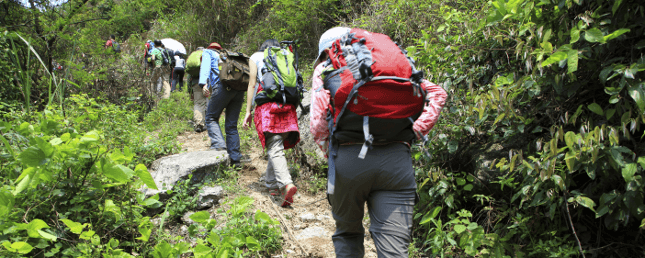
Adopting this approach on your walking holiday may mean that you start each slope at a slower pace than some of your companions, but do not feel guilty or worry about trying to keep up. Think tortoise and hare: stick to a steady pace and you may well pass your fellow walkers, their hands on their knees, sweaty and out of breath, before you reach the top.
Even if that doesn’t happen, remember that it is not uncommon for a group who walk at the same speed on the flat to find they have different comfortable speeds when tackling hills.
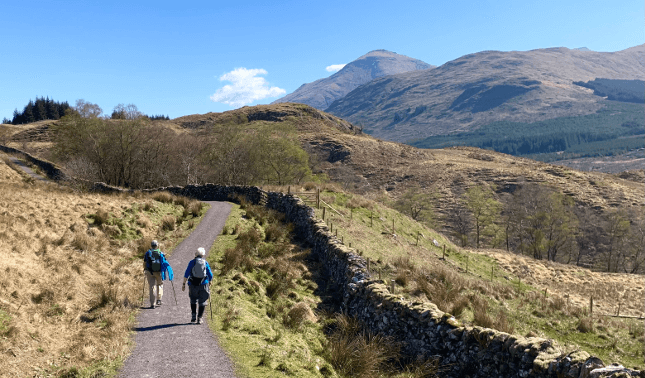
One more tip. If you are walking up hill at around the same speed as someone just in front of you, try imagining that you are attached to them by a rope and that they are gently pulling you up the hill. It may seem strange, but it does work!
A good pace when descending is defined by control, but control in moderation.
Too little and you run the risk of taking a tumble; too much control and you send considerable force though your legs and knees each time you plant your foot. Positioning your body correctly will be a great help in keeping a steady pace, which brings us to the next P.
A good posture will make all the difference when you're hill walking. Make sure you adjust the way you position your body when you ascend and descend.
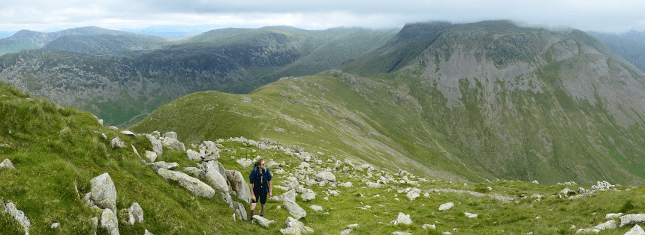
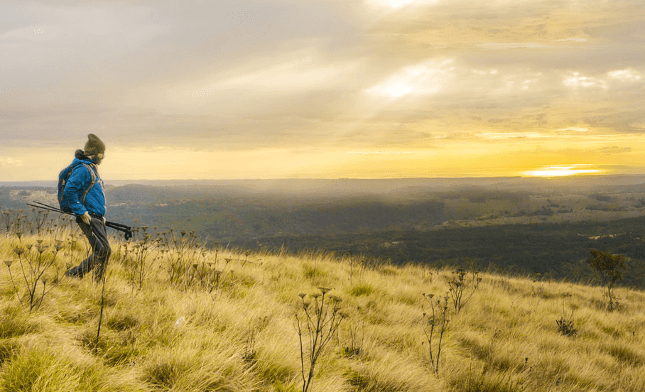
As someone from a running background, I use to be a pole snob. I thought they were unnecessary for fit people like me. How wrong I was. After one session using a friend’s I was hooked — not just when ascending, but descending as well.
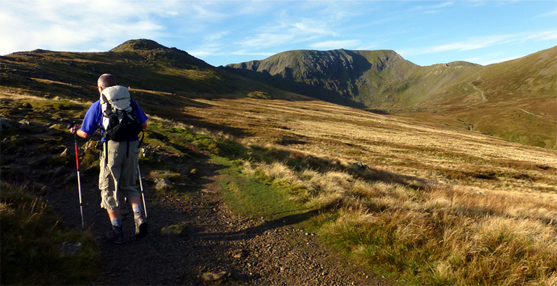
During the upward climb, poles allow you to utilise the strength of your upper body to propel yourself upward. On the way back down, they bolster your balance and decrease the force transferred through your knees.
If you’re considering using poles, take a look at our in-depth article on the subject.
Like any form of exercise, walking up and down hills becomes easier with practice, as your cardiovascular and muscular systems adapt to the new challenge. To experience those high-up views without having your breath taken in advance, slowly build hills into your daily life before your walking holiday begins.
Ideally, you should intentionally set out on shorter walks over hilly terrain. While big hills are great, even routes will smaller hills will help. As you climb your hill, try doing one of two things.
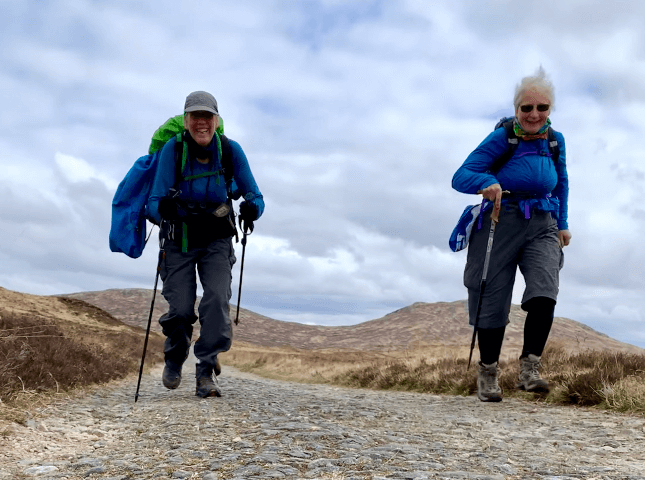
Walking on hills is basically going up and down. Training and fitness benefits can therefore be gained from doing the same movements in a man-made environment — i.e. by always taking the stairs rather than using the lift.
Most of the soreness you feel after a hilly walk, especially in your front thighs — the quadriceps — comes from the downhill section, not the climb. Getting your muscles trained for the descents is key to reducing this as much as possible, so don’t neglect to walk down the stairs or escalator as well as up.
For many of us, training is focused indoors at the gym — especially in the winter. As well as doing some focused strength-training exercises, you can easily build your climbing muscles using many of the cardiovascular machines.
We will look at suggested exercises and training programmes in next month’s issue.
Keep in mind that our bodies adapt to the particular training stimulus we give them. If you are very fit as a runner or cyclist but you aren’t a regular walker, you still need to do some walking training as part of your preparation if you want to avoid feeling sore.
As a regular runner, who at the time could run round the Yorkshire Three Peaks in under 3 hours 30 minutes, I was left as stiff as a board after walking with a friend for around eight hours because different muscle actions are involved.
Choosing what to wear is another important part of pre-walk preparation. Don’t forget to wear layers so you can shed a top or two when approaching a more strenuous section like a hill and avoid that flustered, sweaty feeling. Read our layering tips for more information.
With these tips, you'll be able to tackle hilly hikes like the Bob Graham Round in no time. And if you need any more convincing, here’s a spoiler from the top. Happy hill walking!
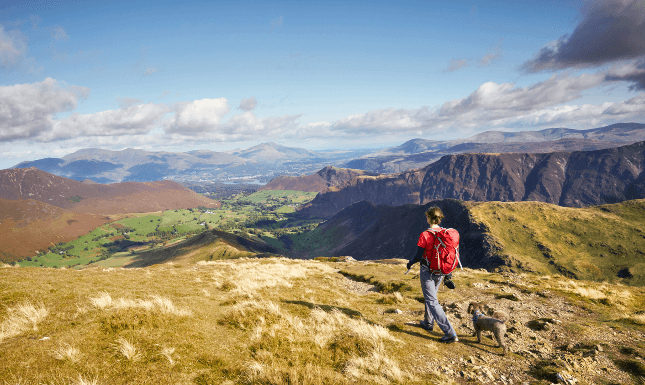
Olympian, Advisor in High-Performance Sport
Sarah Rowell has been a successful long distance runner since the early 1980s, running marathons before switching to off-road surfaces.
Her achievements include representing Great Britain in the Olympic Marathon, finishing second in the 1985 London Marathon and second in the 1996 World Mountain Running Championships, and winning the English Fell-Running Championships in 1997.
Sarah now works as an advisor within high-performance sport.